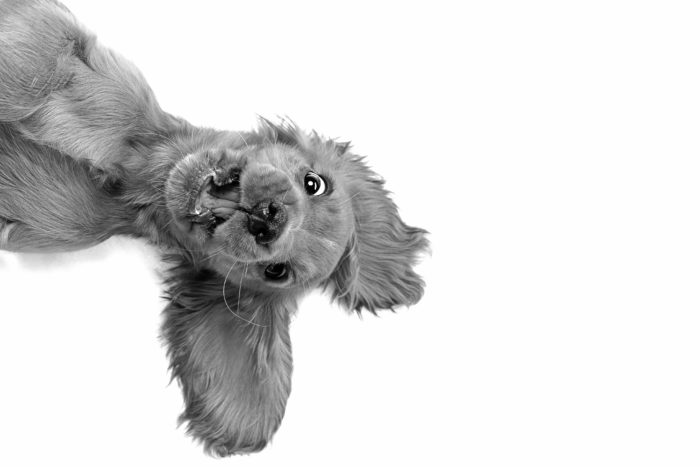Puppy Training FAQ
Many problem behaviors we see in mature dogs develop from a lack of socialization and preventative work done early on. These problems are often not visible when your dog is still a puppy.
Starting the work now, when your pup is younger than 16 weeks old, is time well invested that will help ensure your dog is easy to live with and well adjusted around other dogs and people.
It’s hard to believe that those cute, fun puppy behaviors may become problematic as your dog matures. We like to use the analogy that doing thoughtful socialization and preventative work at this critical age is like giving your puppy a ‘behavior’ vaccination. Vaccinations help to prevent health problems. Socialization and preventative work, helps to prevent behavior problems. Think of this time as a golden opportunity that you don’t want to miss!
Often this type of behavior occurs during unsupervised time or when a pup becomes overtired. Provide fun and enriching activities for your puppy. Redirect him to
appropriate chew toys. Can you do a short, fast training session? Does he need a nap? An overtired puppy will bite more. Read our tips on managing puppy biting.
The key to successful house training is complete supervision. It is essential that you go outside with your puppy so you know if he is “empty or full” when he comes back in. Crate training can help prevent accidents when you can’t oversee your pup. Read about crate training and the reasons for managing 100% of your puppy’s time when he’s learning what is appropriate and acceptable.
Your puppy explores the world with his mouth. Biting and chewing are normal behaviors. Manage your puppy’s environment by supplying appropriate chew toys and limiting access to inappropriate objects. Read more on managing puppy biting here.
It is vital that you properly supervise your puppy and his interactions with children. Prevent access to kids by attaching a leash to the pup. Work on teaching your puppy to check in with you, first with no distractions and then around distractions such as kids!
Read about the How do Dogs See the World? in Getting Started. Also in this section, is an
equipment list. You should use a long line in the park and other wide-open spaces until the Recall
becomes solid. Go to the Prevention section and read about children and dogs. In the Games section you will find games to help teach a reliable recall.
Crate training is a process that takes a good plan, a bit of time and lots of patience. Spend quality time starting on day one building a positive association with the crate. Play crate games, feed the puppy in his crate, place the pup in the crate when he falls asleep. Position the crate close to where you are and keep one in the bedroom for overnight.
When your puppy is frightened of something, it is important to move away from the scary thing. Give the puppy space and spend time building a positive association with it. This is “socialization.” Often socialization needs to be accomplished through a gradual process. Always go at your pup’s pace and avoid putting him in situations where he feels uncomfortable.
Submissive urination is not uncommon. Please do not scold the pup when this happens. This may result in worsening the situation. With your good work and attention to proactive socialization the pup will out-grow this behavior as he matures and develops more confidence. Another tip is for people he meets to stay low key as they greet the puppy. Coach them to turn sideways , crouch low, let the pup go toward the person instead of the person reaching toward the pup.
Puppies explore the world with their mouths. It’s natural for them to pick up things they encounter on the ground. At this stage of the game you want to teach your puppy not to want to guard found objects and to let go of things
he pick up. Work on Trade You and Drop It. You should also work on Come Away from
Distractions.
Read about this topic in the Prevention
section. This will offer you an overview of why your
pup is not comfortable being groomed or having nails trimmed. You will learn how you can teach your puppy to be comfotable with routine handling and much more. Before you
know it you’ll be booking a day at the Doggie Spa!
Experiment with what you are using for treats and toys. Can you use a treat your puppy is more excited about? Read Daily Routine – Why Structure is Important, in the House Training section. You should also read the Games section where you will learn how to get an uninterested puppy playing with toys.
Car rides are a terrific way to get out and about for early socialization, but with so much to take in and see they can also be stressful or uber-stimulating for a pup. Take the time to teach your puppy to be calm and relaxed in the car from
the get-go.
You may want to employ the use of a dog safety belt or a crate to keep the puppy safely contained. Have a toy your pup loves to chew available for him. Go for short car rides to places the pup will enjoy.
Practice getting your pup in and out of the car without going anywhere. Try the On and Off exercise in the Prevention section.

